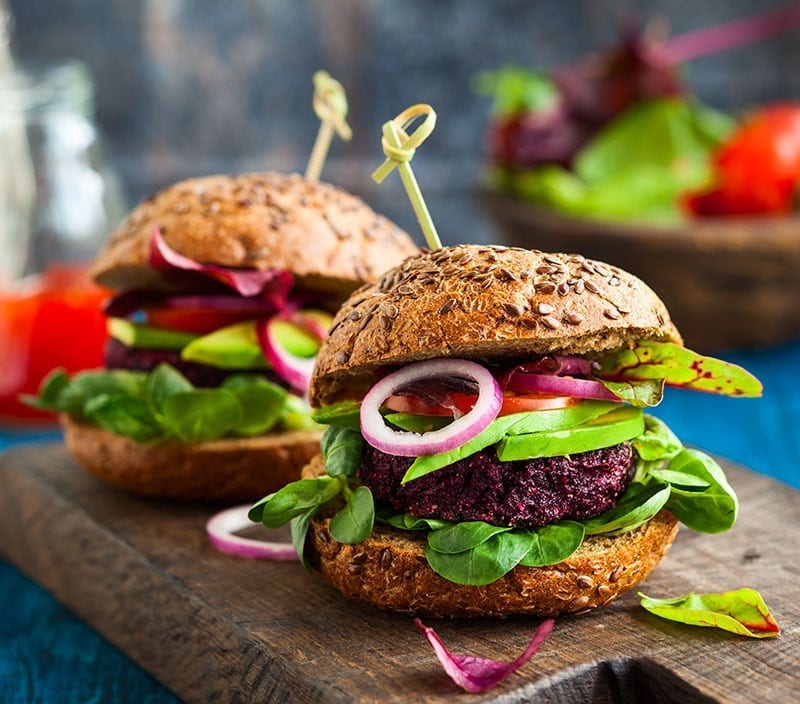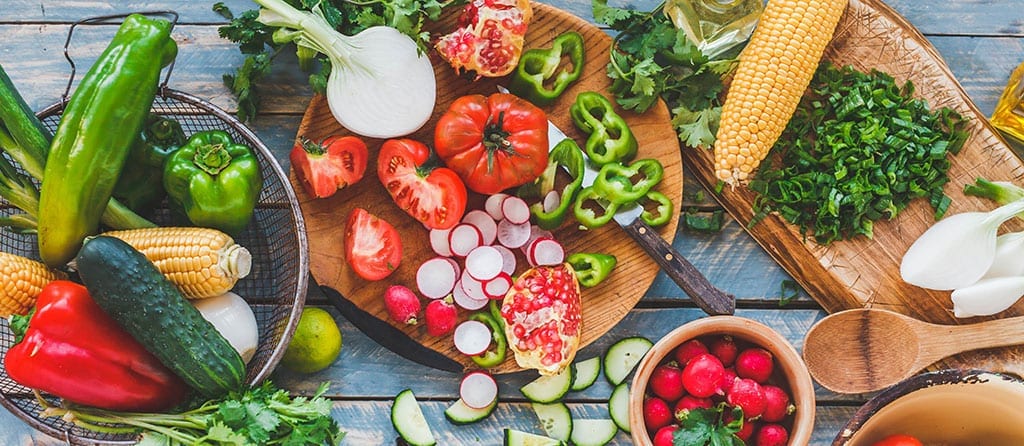Summer is an excellent time to break out of the same old boring eating habits and experiment with new and seasonal fresh foods, fruits and vegetables. Try grilling with a different attitude! Break away from the usual burger or hot dog and learn simple techniques for exciting meals. Grow your own miniature garden and reap the healthy benefits. Read below to get simple summer tips on food and drinks:
Grow Your Garden.
You really do not need to be a master gardener to take a chance on a windowsill garden. Try to grow these plants to add to your summer dishes for fresh flavor and a healthy twist. This will add beautiful greenery to your kitchen. Basil is fairly easy to grow, is an anti-oxidant, anti-bacterial and an anti-inflammatory herb. It can reduce inflammation caused by diabetes, heart disease and autoimmune illnesses including arthritis. If you are not motivated to grow your own basil from seeds or seedlings, purchase a small pot of basil from your local Farmer’s market or grocery store. The basil aroma will enhance your kitchen. Add basil to fresh tomatoes and cheese for a tasty treat. Chop basil leaves and add to a small baked potato topped with Greek yogurt or low-fat sour cream. Consider growing broccoli sprouts which are concentrated stores of “sulforaphane” which may help fight cancer. Broccoli sprouts are packed with nutrition but are easier on the digestion and do not have a strong bitter flavor. Red cabbage microgreens contain more vitamin E and vitamin K than the mature cabbage with less stomach gas or discomfort. Red cabbage microgreens also build bone and help fight blood clots. You can sprinkle seeds in 2 inches of soil in a baking dish and top with more soil. Place on your windowsill, water and mist daily. Add to chopped salads, soups or fresh cooked vegetables.
Summer Grilling.
Get outside and start using the grill that sits in your yard or patio for most of the year. It doesn’t matter if it is a portable Hibachi grill or a swanky built in grill since the results are about the same. Remember that grilling meat, chicken and seafood can create compounds that are inflammatory; these compounds may raise your cancer risk. Just doing a few things prior to grilling can help reach delicious flavor without cause for alarm or risk. Always purchase a lean cut of meat and then trim any excess fat which remains. Fat can increase flames and smoke which adds to the release of these toxic compounds. Marinate your meat in beer, wine, vinegar or citrus which all contain anti-oxidants and limit formation of compounds on the meat. Use a spice rub to protect meat as well. Although most master grillers advise to “use high heat and do not flip meat until dark and crusty on the outside” try to defy this technique. Take the opposite approach to prevent unhealthy compounds. Opt for low cooking temperatures and flip often to prevent toxic compound formation. Use grass-fed beef when possible which contains more Omega-3s, a benefit for heart and diabetes health. Verify that it is officially grass-fed meat by looking for the label “American Grass-fed Association”. It will be pricier but you will get many more health benefits.
Make a Pasta Salad.
People with diabetes are always afraid to eat rice, cereal, bread, potatoes and pasta. Stick to portion size and timing of the food to help dismiss this untrue concept. Try multi-grain pasta and cook to al-dente. Cool the pasta for 12 hours and then cool overnight in the refrigerator. Reheat a cup of cooked pasta (2 servings) and now it will contain resistance starch which is easier on your blood sugars. Add all kinds of goodies to the pasta including pine nuts, fresh tomatoes, basil, lemon juice, a touch of olive oil, grated Romano cheese and a dash of kosher salt and pepper. Add 4-5 ounces of chicken or a handful of shrimp and you have a delicious, filling, and complete meal. If you are still convinced that pasta is off limits, choose zucchini and purchase a spiralizer which will make vegetables into long strands like spaghetti. Add fresh tomato sauce, peas, garbanzo beans, chopped up garlic and you are set with a great summer dish.
Veggie Burgers.

Cauliflower Pizza.
Again, you are allowed to have regular dough pizza in small servings but if you are set against it, try to making your own dough from mashing cauliflower in a food processor. Make the cauliflower into a paste and press down into an oil-sprayed pizza pan. Cook until hardened and add fresh toppings such as mushrooms, onions, tomatoes, whole cauliflower pieces, olives and grated cheese. Add baby turkey or chicken meatballs if you need more protein.
Make Your Own Energy Bars or Snacks.
Quick and portable snacks are great on summer travels with everyone relying on energy or protein bars. Think outside the usual bar filled with non-pronounceable ingredients that often have added sugar. You can combine seeds, nuts and dried fruit into a snack bag for your own personalized energy snack. Try raisins, walnuts and pumpkin seeds or cashews, dried apricots and sesame seeds. Remember portion size since these snacks are high in calories. This will be fresher, cheaper, taste better and not provoke blood sugar highs and lows like some bars. If you want to stick to a healthy premade bar with whole ingredients try “Kind bars”.
Make Your Own Smoothies and Iced Coffee Drinks.
Summer heat causes people to frequently choose liquid meals. Just like specialized coffee drinks, store bought fruit smoothies can end up being full of sugar, natural or added, plus be around 900-1100 calories per drink! Make your own iced coffee drinks with different types of milk (coconut, almond, low fat, soy) and flavor it with Stevia which will save you a bundle of money and calories. Store bought fruit smoothies are often considered ‘sugar bombs’ and can make blood sugars soar. Prepare a mostly green smoothie with spinach, kale, parsley, celery, and cucumbers. Add lemon juice, chopped green apple and some nut butter with ice cubes. Blend and you have a healthy, filling drink with no added junk. This should not count as a meal since it contains mostly free foods.
Boost HDLs.
Of course exercising outdoors in the summer will boost HDLs along with eating a selection of these listed foods. Eat hemp seeds on your cereal or salad. Add olive oil, avocado, nuts, seeds, salmon, anchovies and grass-fed, low-fat dairy to help boost HDL levels.
Possible Slimming Foods.
According to The British Medical Journal, “adding strawberries to your salads, parsley to your smoothies, and pistachios to your yogurt or oatmeal may be linked to less weight gain”. Each of these foods are high in flavonoids and anti-oxidants which may increase resting metabolic rates. Other foods with these benefits are blueberries, raspberries, plums, red grapes, kale and pecans.
Choose Protein Packed Plant Foods.
Most of us eat too much protein daily which adds to excess calories. Think about adding plant protein for fewer calories per ounce. Eat lentils which give you 9 grams of protein per ½ cup. Lentils contain lots of fiber which makes you full and helps with blood sugars. Edamame has 9 grams of protein in a ½ cup serving and soy is a plant that contains all nine essential amino acids. Look for organic soy. Spinach contains 3 grams of protein in ½ cup serving and is loaded with iron, magnesium, folate, vitamin A and K for heart and bone health. Add peas to soups, stews, salads and casseroles since they contain 4 grams of protein per ½ cup. They can be eaten raw for extra crunch or cooked. Peas contain vitamin A and C.
Hydrate on Melon.
Summer is the peak season for melons so munch away. Melons are dense with water when ripe and a perfect way to hydrate with added flavor. Always rinse the rind prior to slicing and eating since bacteria from the rind may make its way onto the melon flesh. Honeydew is packed with potassium and vitamin C, along with a good source of copper which allows red blood cells to absorb iron. Watermelon is always a summertime and BBQ favorite. Watermelon has lycopene which may protect against cancer and helps eye health. Adding a fat source may increase the absorption of the lycopene; add some Feta cheese to watermelon cubes along with arugula, red onion, olive oil and vinegar. Eat cantaloupe for beta carotene which lowers inflammation and may keep your mind sharp. Eat the seeds of the melons after they are cleaned, baked and seasoned in the oven. Seeds contain niacin, zinc and Omega 3s. New research states that “eating ½ cup of fruit a day can help prevent metabolic syndrome, a precursor to diabetes”. Make a melon drink for a refreshing summer treat. Take melon cubes and place them in a blender with fresh lime juice and mint leaves. Blend until smooth and pour in club soda. Dress the glass with fresh mint leaves and a lime wedge.
The lists go on and on to help make summer fun, delicious and healthy for those with diabetes. Tailor your eating and drinking during this summer to achieve benefits of control with lots of delicious flavor. Enjoy!
Have a question or comment? Then post below, no registration required. I would love to hear from you!
NOTE: Consult your Doctor first to make sure my recommendations fit your special health needs.







Roberta, nice article once again! Always learning good stuff!
Thanks for the info. I’m wondering about your pasta suggestion. When does the pasta gain the resistance starch – after cooling 12 hours plus overnight, or after reheating the next day? I’m asking because I’d rather not reheat – just use it cold in a pasta salad, unless it’s the reheating process that generates this resistance starch. Thanks!
Hi Marcy,
Thanks for your question regarding pasta and resistant starch. You do not need to reheat since it is the cooling process that causes expansion of resistant starch. Resistant starch may help keep you full longer and increase mineral absorption. You can do the same with potatoes, sweet potatoes, rice, beans and unripe bananas. If you do choose to reheat, you will not lose the previous cooling benefits. Enjoy, Nurse Robbie
Great – thanks for the clarification!
Great article. I especially found your information on pasta very helpful. I tend to stay away from pasta, but will try your technique so it won’t spike my blood sugar. Thanks.